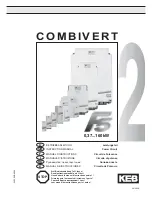
IM 1E10C1-E
9-7
9. MAINTENANCE
9.2.3
Disagreement of Indication with Actual Flow Rate
Examine whether or not a valve
exists immediately before the
flow tube (on the upstream side).
NO
Set the parameters correctly.
NO
Adjust zero when the flow tube is
completely filled with liquid and
the velocity is zero.
a. Remove scales. Especially
clean the electrodes and their
vicinity.
b. Remove scales with a soft
brush or a piece of soft cloth.
Never claw or scratch the
lining.
NO
NO
YES
Examine filling with liquid in the flow tube, bubbles and correct
grounding.
Change the piping or mounting to
fill the flow tube with the liquid.
Vertical mounting is effective.
NO
Provide a defoaming device on the
upstream side of the flow tube.
NO
Complete grounding. (The
resistance must be 100
Ω
or less.)
See “3.2.1 Protective Ground”
NO
Completely perform end-
treatment of the signal cable with
PVC tubes or insulation tape so
that the conductors, inner shields,
and outer shield do not contact
each other or with the case.
Recheck the liquid property.
Check whether or not the AM011 cable is used for the signal
cable, if there is contact between any two of the cable conductors
(A, B), inner shield (SA, SB), and outer shield (C), and that they
are securely connected to the terminal board.
NO
YES
a. If a valve located immediately
upstream of the flow tube is
used half opened, the indication
may be affected with flow
turbulency.
b. Move the valve downstream of
the flow tube.
c. If the valve must be located on
the upstream side, allow for a
minimum distance to the flow
tube of 10 times the flow tube
diameter or use the valve fully
open.
Check the operation with the
AM012/SE calibrator, and you
will be able to confirm the error of
the converter or of Flow Tube.
Contact the nearest Yokogawa
office or service center.
YES
YES
YES
YES
YES
YES
START
Are parameters
correctly set?
Is zero adjustment
completed?
Is the flow tube
completely filled with
liquid?
Is the liquid free of
bubbles?
Is grounding complete?
Is the signal
cable completely end-
treated?
Is the liquid
likely to cause deposits?
Is a valve located
immediately upstream of
the meter?
















































